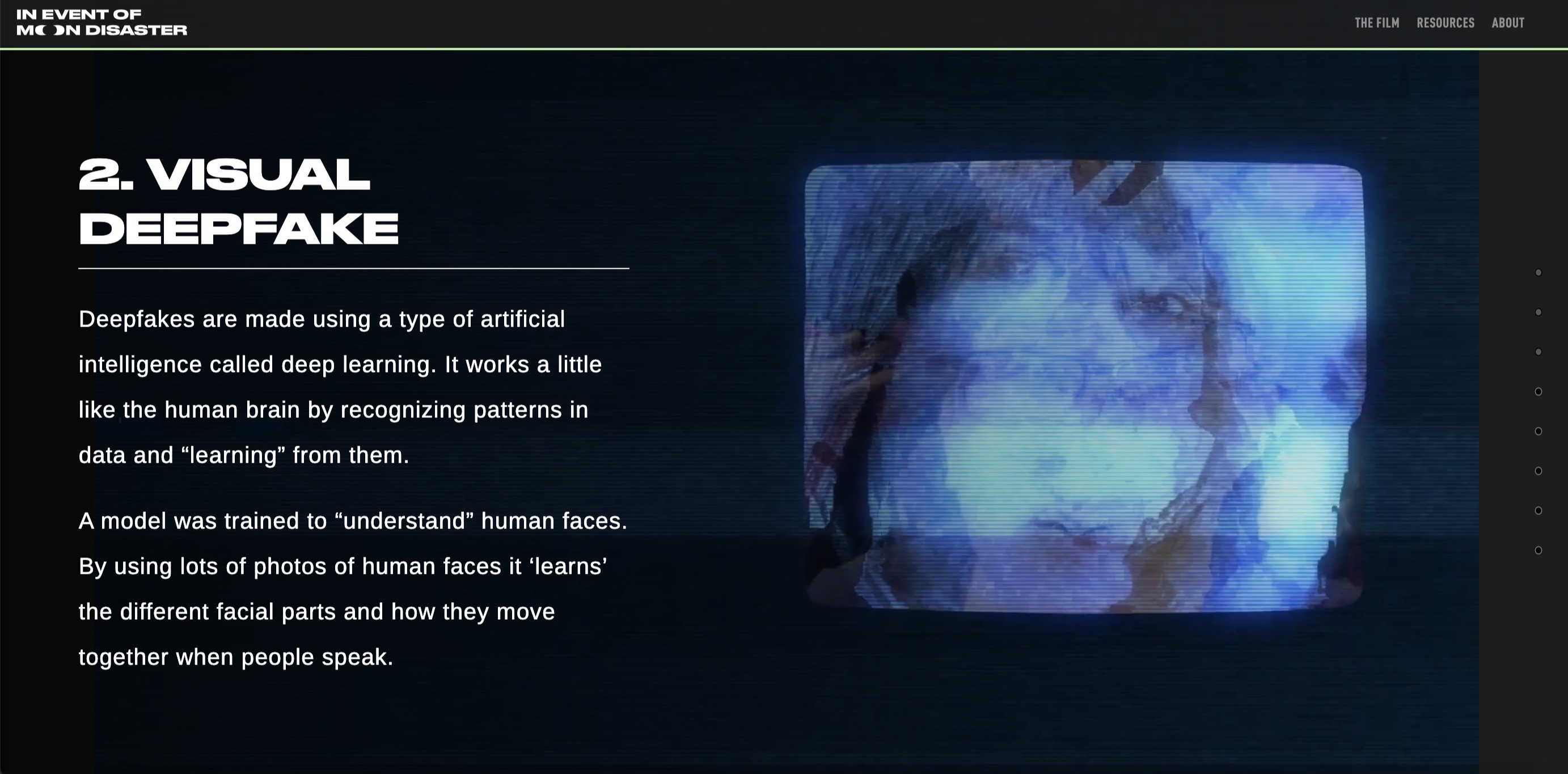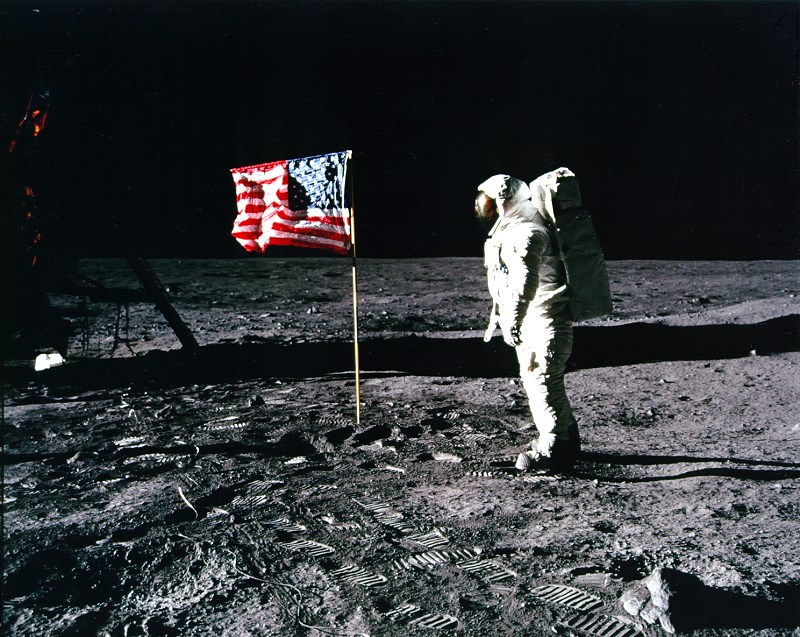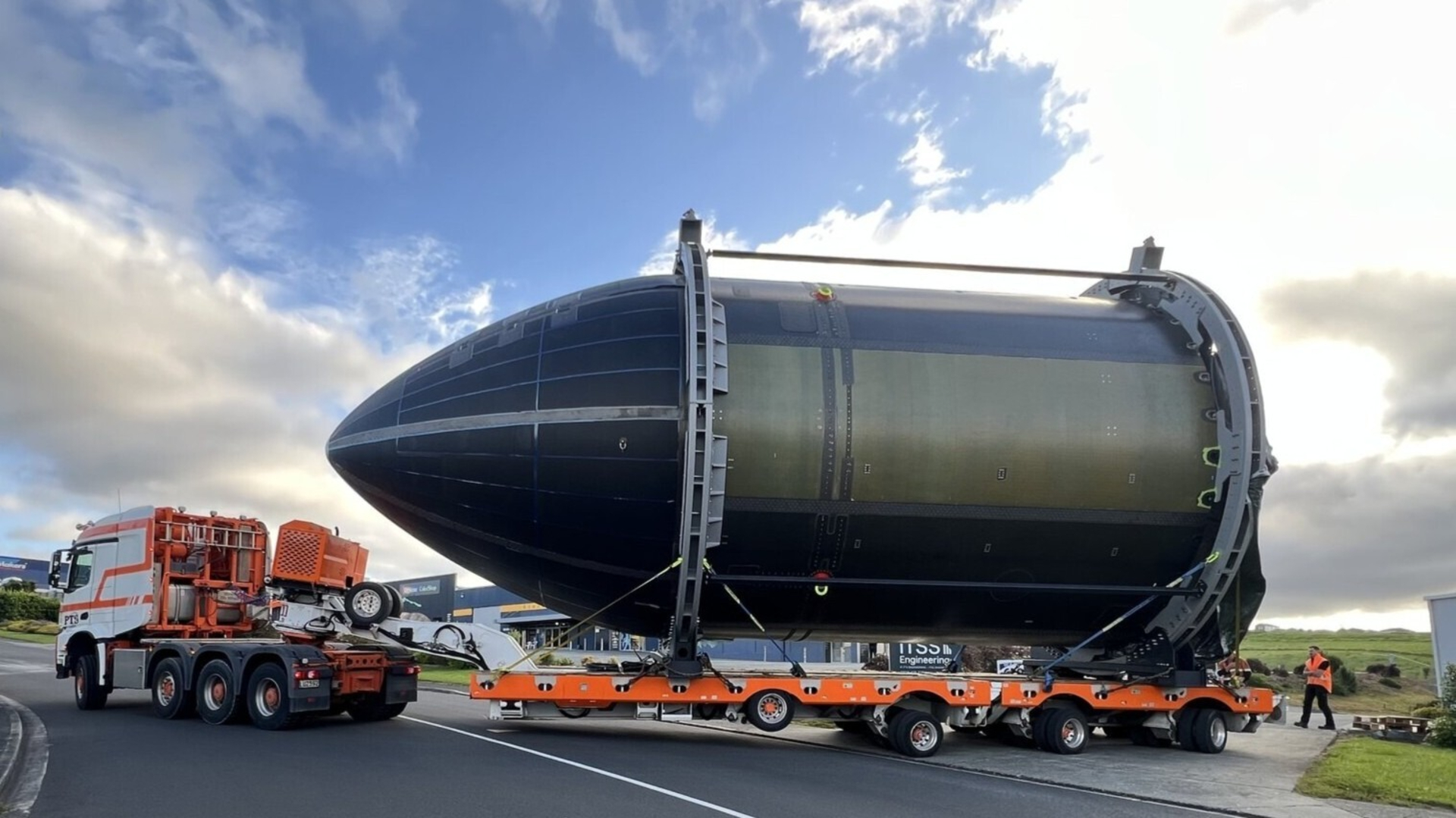Apollo 11 'disaster' video project highlights growing danger of deepfake tech
"Fate has ordained that the men who went to the moon to explore in peace will stay on the moon to rest in peace."
So begins President Richard Nixon's televised address to the nation 51 years ago today (July 20), given just after the historic lunar touchdown attempt of Apollo 11 astronauts Neil Armstrong and Buzz Aldrin went tragically awry.
"In ancient days, men looked at stars and saw their heroes in the constellations. In modern times, we do much the same, but our heroes are epic men of flesh and blood," Nixon went on. "Others will follow, and surely find their way home. Man's search will not be denied. But these men were the first, and they will remain the foremost in our hearts."
You can watch Nixon reading these words, which were penned by speechwriter William Safire, in this dramatic and disturbing video. The most disturbing thing about it, of course, is that it's a fake, and a very convincing one.
In reality, Armstrong and Aldrin did land safely on the moon on July 20, 1969. They returned to Earth safely, too, with crewmate Michael Collins, who had remained in orbit as the moonwalkers explored the lunar surface.
Related: Apollo 11 at 50: A complete guide to the historic moon landing
The new video is part of a digital storytelling project from the Massachusetts Institute of Technology's (MIT) Center for Advanced Virtuality called "In Event of Moon Disaster." That was the title of Safire's (very real) Apollo 11 contingency speech, which the mission's success consigned to a historical footnote.
Breaking space news, the latest updates on rocket launches, skywatching events and more!
The new project drags the speech back into the light, making it the centerpiece of a "complete deepfake" — one with manipulated audio and video.
The 7-minute video begins with real Apollo 11 footage, which team members edited deceptively to create the impression that the epic moon landing failed. Then comes Nixon's speech. It was actually read by a voice actor, but you'd never know it. The team used deep-learning and artificial-intelligence tech to reproduce Nixon's voice and facial movements.
Project team members didn't go to all this trouble just for giggles. They wanted to showcase the danger of media disinformation, which is already profound and will only grow as deepfake tech gets better and better.
"This alternative history shows how new technologies can obfuscate the truth around us, encouraging our audience to think carefully about the media they encounter daily," project co-leader Francesca Panetta, XR Creative Director at MIT Virtuality, said in a statement.
"In Case of Moon Disaster" debuted last year as an art installation, which featured a reproduction of a 1960s-era living room. The project has been selected by several film festivals, and it received a Creative Media Award from the Mozilla Foundation.
The team just launched a website that showcases the video, explains how it was made and dives in detail into deepfake tech and the risks it poses.
“It’s our hope that this project will encourage the public to understand that manipulated media plays a significant role in our media landscape, and that with further understanding and diligence we can all reduce the likelihood of being unduly influenced by it," project co-leader Halsey Burgund, a fellow at MIT Open Documentary Lab, said in the same statement.
Learn more at http://moondisaster.org.
Mike Wall is the author of "Out There" (Grand Central Publishing, 2018; illustrated by Karl Tate), a book about the search for alien life. Follow him on Twitter @michaeldwall. Follow us on Twitter @Spacedotcom or Facebook.

Michael Wall is a Senior Space Writer with Space.com and joined the team in 2010. He primarily covers exoplanets, spaceflight and military space, but has been known to dabble in the space art beat. His book about the search for alien life, "Out There," was published on Nov. 13, 2018. Before becoming a science writer, Michael worked as a herpetologist and wildlife biologist. He has a Ph.D. in evolutionary biology from the University of Sydney, Australia, a bachelor's degree from the University of Arizona, and a graduate certificate in science writing from the University of California, Santa Cruz. To find out what his latest project is, you can follow Michael on Twitter.



